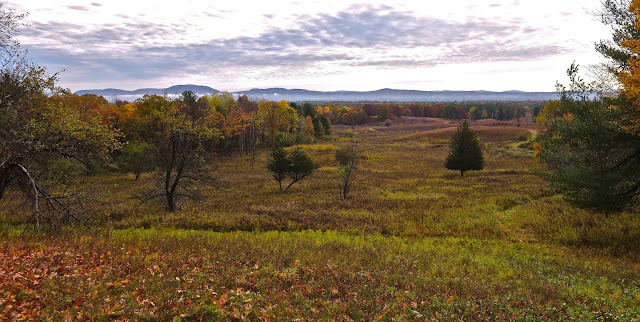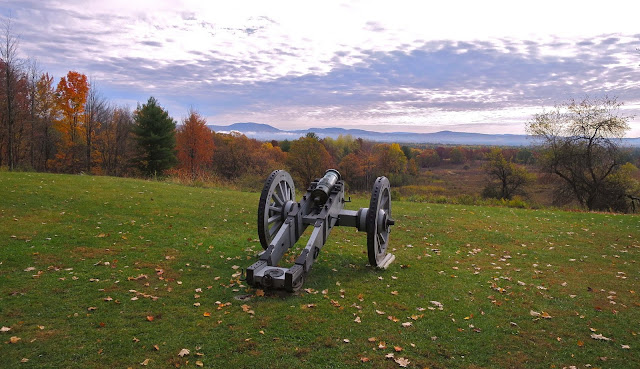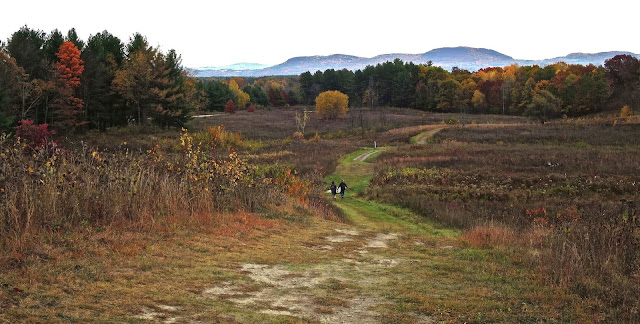I found this Goldenrod Ball Gall yesterday. The neat little hole in it indicates the larva inside was probably gobbled down by a downy woodpecker. (No, it's not the gall resident's exit hole; that would be much tinier.) Chickadees also rifle these galls, but make a real mess of them when they do. And squirrels cut them off and carry them away. I learned this from John Eastman's Book of Field and Roadside, which I turned to again to learn more about this gall. And its parasite. (Be warned!)
The gall is caused by a fruitfly, Eurosta solidaginis, which lays a single egg on the stem of the goldenrod (almost exclusively tall goldenrod, Solidago altissima) just before the plant's leaves open. When the larva hatches, it eats its way inside the stem. Nobody seems to know why the plant reacts the way it does, but a swelling ball of solid tissue forms around where the larva is feeding. Come fall, the larva chews its way outward through this tissue, making an exit tunnel but leaving the door unopened. It doesn't leave but retreats to the center, where it sleeps through winter, snug in its now-dead gall, pupating only a few weeks before spring arrives. Spring comes, the adult emerges inside the gall, crawls up the tunnel it bored last fall, and finds the door still closed. Now, the adult fly doesn't have the chewing mouthparts its larva had, so how will it get outside? Undaunted, it clamps itself to the door, pumps bodily fluids into a special part of its head, and this swelled head bursts the gall's external membrane. The adult fly then pulls itself out. Cool!
But that's only if all goes well. And all will go terribly wrong if its parasite Eurytoma obtusiventris comes along. This tiny wasp finds the fruitfly egg even before the fly hatches and starts forming its gall. The wasp sticks its ovipositor into the fly egg and lays an even tinier wasp egg there. The wasp larva bores into the fly larva and lurks there unnoticed until the latter is full grown. It then proceeds to devour its host from the inside out. Eewww! (Don't say I didn't warn you.)
Actually, I think it's pretty neat how all god's chillun get fed. In nature, that is. I don't think our factory farms that knowingly torture livestock are fine at all.
Dead Man's Fingers (Xylaria polymorpha), a fungus (or is Mickey Mouse reaching up from his grave?)
Jelly Leaf fungus (Tremella foliacia), oozing a blood-red fluid all over my hand. (Actually, this one is edible, and not just by Zombies!)
And how could I forget Witch's Brooms on Halloween? These tangles of twigs are caused by some kind of irritant to the branches of woody trees and shrubs. This was one I found in a Shadblow tree, a frequent host for Witch's Brooms.
Oh wait! I thought of some MORE gory stuff! Here's some Oozy Orange Slime that looks like some tree stumps have vomited. It's caused by a yeast that feeds on the sugars in tree sap, and you can read all about it on the Cornell Mushroom Blog.


























































